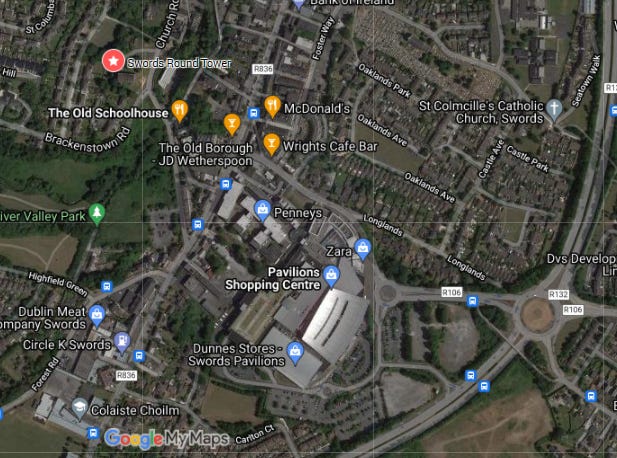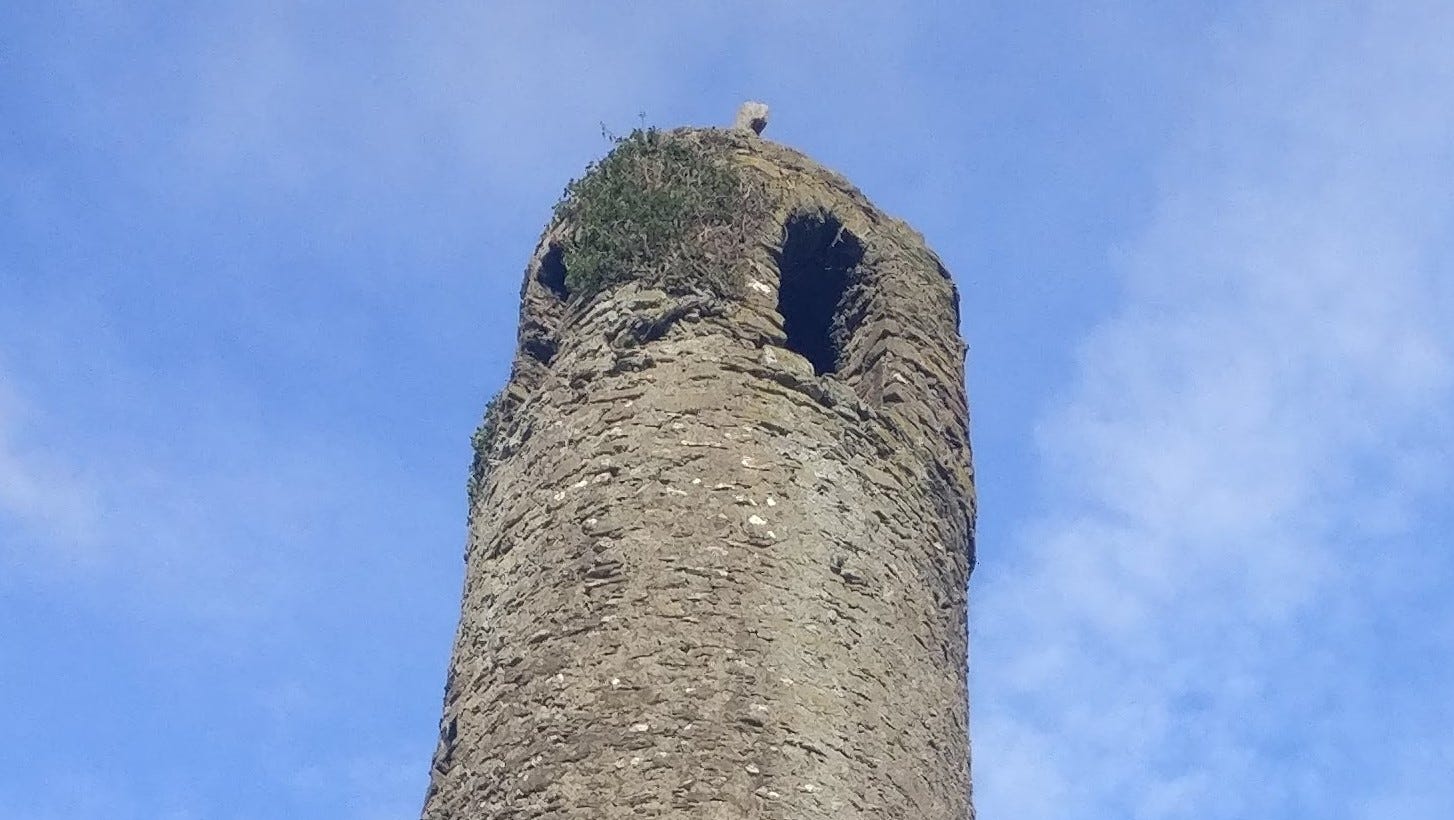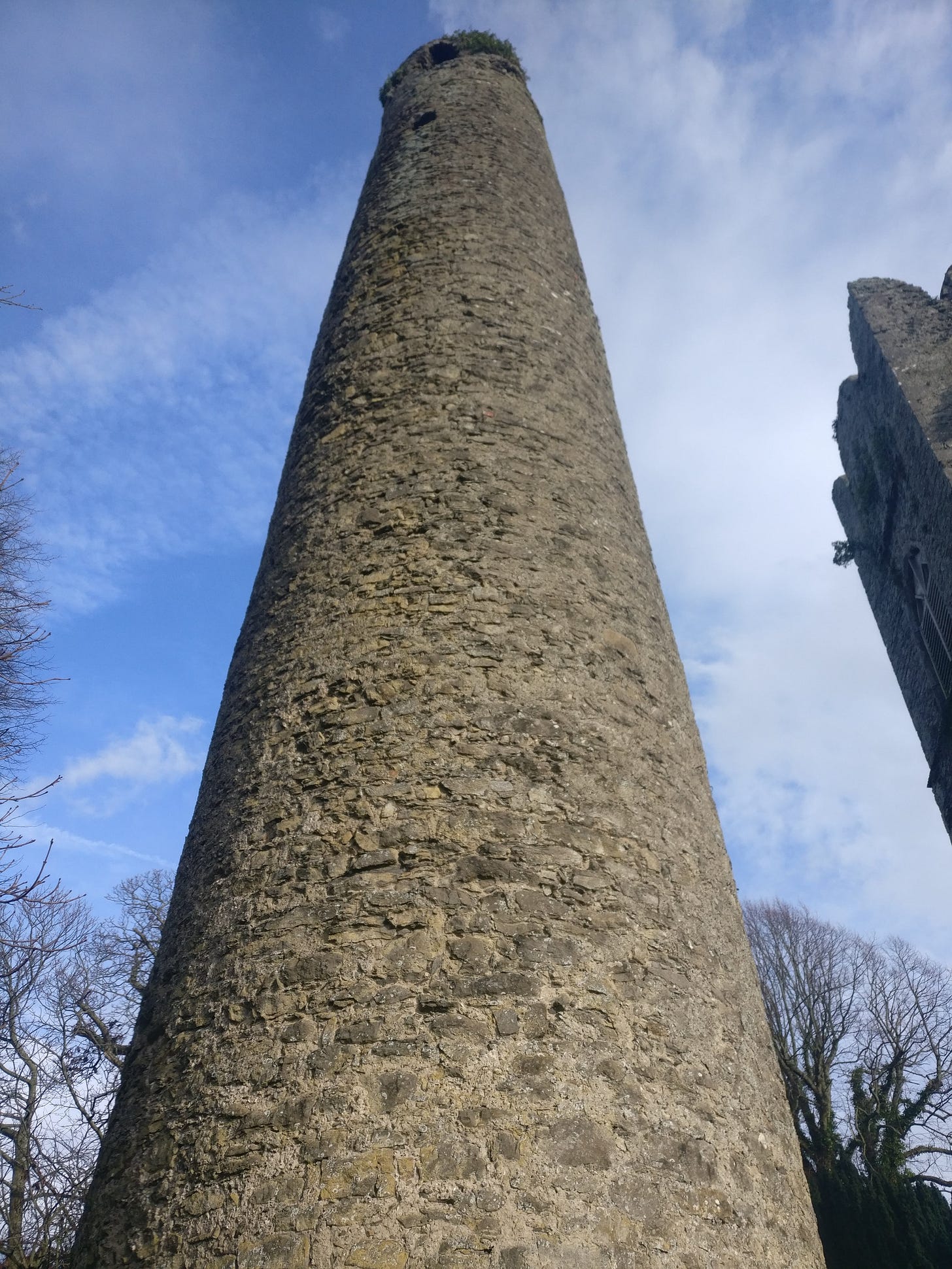In 2019 I briefly visited the town of Swords in Co. Dublin. Swords is a town with an important medieval history and it still retains a number of significant upstanding medieval remains, including a round tower. This monastic site also contains a later medieval belfry, as well as a 19th century Francis Johnston designed Anglican church, St. Columba’s, which is still in use.


The Round Tower at Swords Co. Dublin dates from approximately the 10th century. It stands 26 metres in height and is approx 5 metres in diameter. The entrance door is at ground level which is not typical for a round tower, however, this may have not been the case originally. It would appear that the ground level has risen considerably over the years, perhaps by as much as 2 metres. This is not unusual at medieval sites, and is further evidenced by the fact that the ground floor of the neighbouring medieval belfry (more on this building another time) is about 1.6 metres below the exterior ground level.

The walls of the tower are roughly 1.3 metres thick. The tower is somewhat crudely constructed of unworked limestone rubble, and the upper floor was obviously "restored" - badly - in relatively recent times. (Lalor suggests the 18th century, O’Keeffe the 17th). It is capped with an undecorated cross. Lennox Barrow informs us that this cross is said to have been erected by the Rev. Henry Scardeville, during his time as vicar between 1682 and 1704, as a testament to the Christian origins of the tower. There had been much contemporary debate, which would continue right up to the 19th century, as to the origins of round towers, with many dramatic arguments made including that they were built by the Danes (Molyneux was of this belief), or were of Phoenician origin, or even that they were pagan fire temples. The truth is, of course, that round towers are Christian buildings associated with churches, mostly dating from before the Anglo-Norman invasion.
While there is a reference to repairs to the top of the tower in 1775, it gives no specific detail. It would seem apparent that the upper story of the tower is not original and that the reconstruction probably dates from the 17th century or earlier. The reconstruction is badly executed (usually poor construction like this is suggestive of a later rather than earlier date) and seems to adopt a more square rather than cylindrical profile. While the tower as a whole is roughly constructed, this upper storey is particularly so and has a rather fragile appearance. Austin Cooper, writing in 1779, expressed concerns as to whether this upper storey would survive much longer, but it endures still.

The doorway and surviving windows have straight lintels, and there is no ornate decoration. Somewhat unusually, the second floor of the tower had a corbelled stone floor with flagstones. It is more typical that all floors would be of timber. Also on this floor is the large opening located above the doorway which can be seen in Figure 3 and also Molyneux’s drawing below. The corbelled floor and large window are suggestive that this storey was of particular significance. This storey could have been the monastery’s treasury with a so-called treasury window. This is a large window where some of the monastery’s treasures, likely relics associated with the founder, could be displayed and venerated. However, this is just conjecture, and it could have been intended for another use.

The tower is all that remains of the monastery founded in 512 by St. Colmcille (St. Columba), which suffered numerous attacks by Vikings and other raiders. It would seem that after his victory (and death) at the Battle of Clontarf the body of Brian Boru, and also that of his son, were taken here before being moved to Duleek.
This round tower at Swords is well worth visiting. It is best to do so on a clear winter’s day as when the trees are in full leaf it is quite hard to get decent photographs of the tower.
Sources/further reading:
Lalor, Brian. 'The Irish Round Tower: Origins and Architecture Explored.' Ireland, Collins Press, 1999.
Lennox Barrow, George. ‘The Round Towers of Ireland.’ Academy Press, 1979.
O’Keeffe, Tadhg. ‘Ireland’s Round Towers.’ Tempus, 2004.
Salter, Mike. 'Medieval Churches of Ireland.' UK, Folly Publications, 2009.
http://swords.dublin.anglican.org/swords.php
http://www.askaboutireland.ie/reading-room/digital-book-collection/digital-books-by-subject/geography-of-ireland/grierson-a-natural-histor/index.xml (Molyneux drawing).




